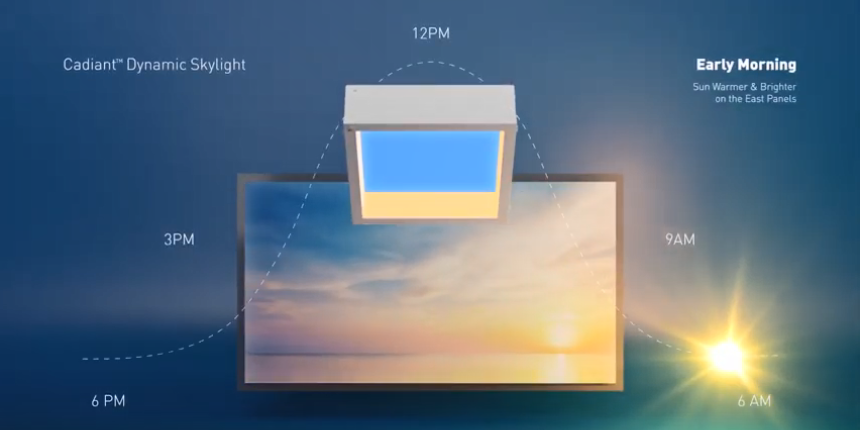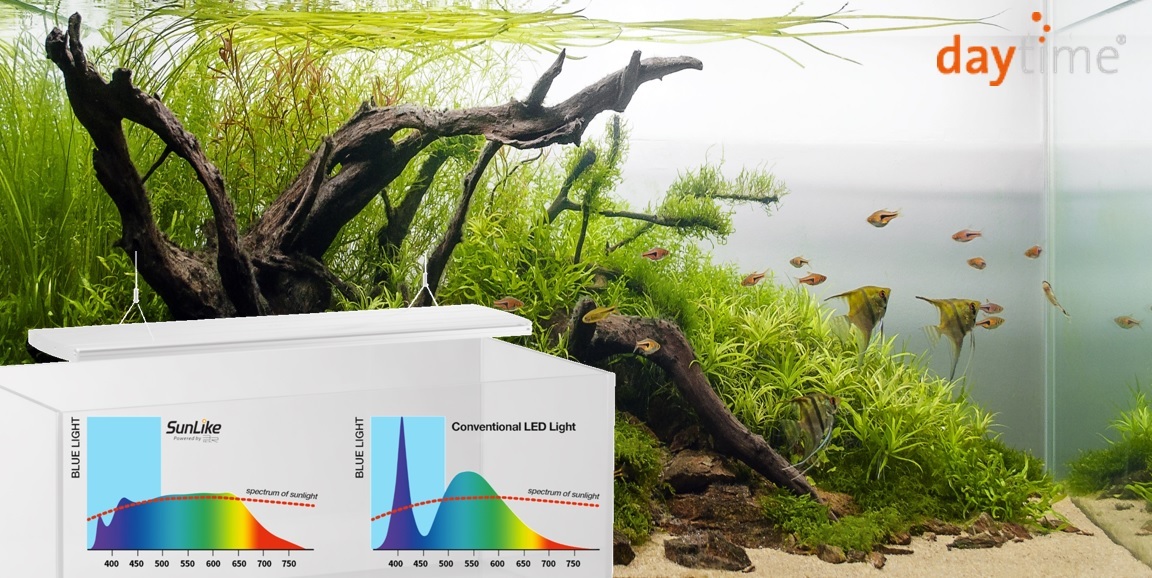LED technology has progressed to create lights that are similar to natural lights for progresses, which might help to enhance wellbeing for not only human beings but also other creatures. Several researches suggested that mood, sense of well-being, productivity and cognition might all benefit from lighting that tracks the solar day. Thus, LED and lighting companies across the world are releasing advanced products for health improvement.
Cree Lighting announced the availability of its architectural-grade Cadiant™ Dynamic Lighting Experience. The company introduced Cadiant™ Dynamic Skylight, a daylighting solution that recreates the experience of being under a natural sky.

(Cree Lighting)
The Cadiant™ Dynamic Lighting Experience uses lighting control and color changing technology, separating sun and sky panels to create the east-to-west arc of the sun. A top LED panel represents the sky and can vary from the extreme blue of a clear day to the gray blue of overcast conditions. Inner LED side panels shift between warm and cool color temperatures, mimicking the sun’s natural dawn-to-dusk movement of the day.
Meanwhile, Seoul Semiconductor announced that WALTRON, specialists in LED lighting systems for aquariums and terrariums based in Germany, has adopted Seoul Semiconductor’s SunLike Series natural spectrum LEDs for daytime® Pendix, WALTRON’s aquarium lighting solutions.

(Image: Seoul Semiconductor/WALTRON)
The daytime Pendix is a matrix LED module with 9 different color temperatures and features a customized spectral lighting design that closely matches the spectrum of natural sunlight enabled by SunLike Series LEDs. Different light colors such as white, blue, and red can be combined in the module to provide the optimal lighting solution for both saltwater aquariums and freshwater aquariums.
Sunlight has always played an important role with plant growth in nature. SunLike Series natural spectrum LEDs are similar to sunlight which radiate a uniform amount of energy at all wavelengths, including infrared and ultraviolet as the optimal light source for plant growth. The technology lowers the light peaks of red, green and blue to be more similar to sunlight’s spectral curve in order to provide a better growth formula than what is common in conventional LEDs. According to Seoul, this results in a more natural and healthy environment for fish, plants, and corals while further decreasing algae growth on glass.













